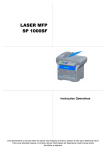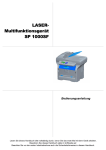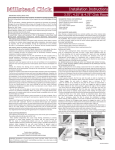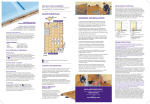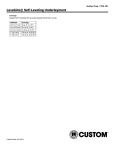Transcript
dBcover LVT Underlay Installation Guide Underlay should be stored at room temperature for at least 24hrs pre installation. Step 1: Subfloor surface must be structurally sound, clean and dry before installation. Check for protruding nails and/or defects in the subfloor. If installing over concrete, the concrete must be dry with moisture emission rates that do not exceed 3lbs / 1000sf per 24hrs. Step 2: Start in a corner and begin installation of the underlayment. Unroll underlayment parallel to the wall in the opposite direction as you plan to install the flooring tiles or planks. The vapor barrier film should be facing down, against subfloor. Step 3: Roll out next row in the same manner butting foam close to first row. Do not overlap foam pad. Step 4: Seal all open seams with aggressive adhesive 2” plastic tape. Step 5: Install flooring per manufacturer’s instructions. Adhesives: For double glue down installations, use a urethane based adhesive (based on the adhesive manufacturer's recommendation) with a 1/16" – 3/32" trowel on the subfloor. Roll with a 35 -75 lb. roller to smooth out any air pockets and to secure a good bond to the adhesive. In double-glue installations over new or existing concrete slabs, the potential for installation performance problems exists if excess moisture or alkalinity is present. These conditions can degrade the adhesive over time. Prior to installing over a concrete slab, always confirm that moisture and alkalinity are within acceptable limits. As a general guideline, a moisture emission rate of 3 lbs/1000sf per 24hrs and a pH between 5 and 9 are acceptable for most adhesives available. Beyond these limits, the risk of moisture or alkalinity related problems increases. For single glue installations (gluing non-woven underlay surface to bottom of surface floor), use any use an acrylic or pressure sensitive adhesive (based on the adhesive manufacturer's recommendation) with a 1/16" – 3/32" trowel on the subfloor. Roll with a 35 -75 lb. roller to smooth out any air pockets and to secure a good bond to the adhesive. The adhesive manufacturer must specify adhesives based on the type of flooring in the system.

